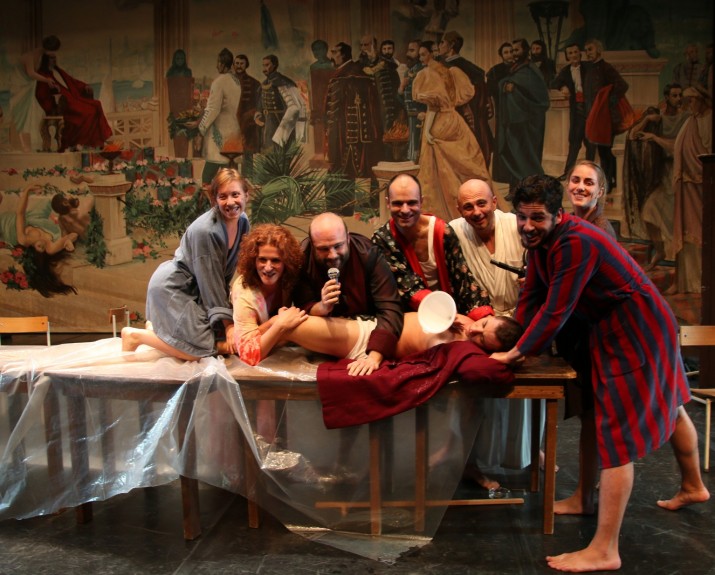
CROATIAN THEATREFrljić & Blažević
All the three productions fit in perfectly together as three acts of one, with the “Croatian Theatre” as an effective final act, though the original production is more complex and dramatic. The trilogy begins with the murdered, the victims Aleksandra Zec, Levar and Reihl Kir, then, by denying murders in Lora it depicts an incredible case of murder of a twelve-year old girl, admitted by the assassins who described it in detail only to be set free, while it all explodes in the “Croatian Theatre”, where, in a wild whirl, Frljić and Blažević connect Jasenovac and Auschwitz with Srebrenica while “Ustashe” and Mile Budak with the contemporary cultural elite.
Snježana Pavić, Ovations for Frljić’s “Trilogy on Croatian Fascism”, Jutarnji list
Actually, in its new mix, the “Trilogy on Croatian Fascism” shows and denounces the continuity of Croatian politics from Sanader’s speech on the Split Riva (waterfront) to the rhetoric and public appearances of the HDZ party president Tomislav Karamarko, whose speech delivered after the victory of Kolinda Grabar Kitarović in presidential election, has also made part of this performance. By such an approach to the staging of the “Trilogy on Croatian Fascism”, the Croatian society is faced with its own crimes and failures of the system. It is the character of Aleksandra Zec, a twelve-year-old innocent girl that was murdered together with her family in the year 1991, that connects all the three productions.
Nina Ožegović, Frljić depicted Croatian fascism by a raw-meat swastika, tportal.hr
